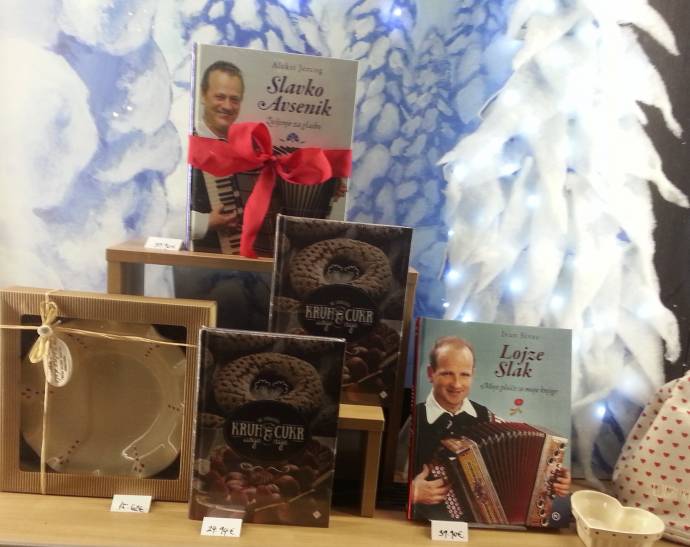January 3, 2018
If you’ve spent more than half an hour in Slovenia, then you’ve almost certainly come across the sounds of oompah oompah, be it on radio, television or live in the form of the man in Prešeren Square in Ljubljana who seems to play the accordion all day, every day, while dressed in ‘traditional’ attire.
In order to cushion the culture shock that might hit you on a visit of to a village party or sports event, I’ll present below some basic information about the main works that might be good to know and the broader context in which the whole genre has been conceived.
To warm up, here is a video of the Guinness World Record for the number of accordion players that play at once:
The two pieces played in the video above are “V dolini tihi” (In the quiet valley) by the Lojze Slak Ensemble and “Na Golici” (On Golica, in German known as “Trompetten-echo”) by the Avsenik Brothers Ensemble, often considered as the inventors of Slovenian oompah, otherwise known as Narodno-zabavna glasba (lit. folk entertaining music), and Oberkrainer (Upper Carniolan) in German.
These are the two most common melodies from this style of music that you’ll hear in Slovenia, with both bands having played a foundational role in the genre, taking it well beyond the country’s borders, and even to the United States.
There are some differences between the two ensembles, especially with regard to the occasions on which certain songs are used in Slovenia. Basically, at sports events we can hear more of Avseniks’ works, especially “Na Golici”, while Slaks’ are something people like to hear or sing when in a more melancholic state of mind.
The official inventors of the genre we are talking about are Avsenik Brothers Ensemble, established in 1953 in Begunje na Gorenjskem. The band immediately gained a high level of popularity in Central Europe and some other parts of the world, and over the years has sold over 32 million records, making them the bestselling Slovene musicians of all times. Their biggest hit, “Na Golici” (Trompeten-echo), 1955, is considered by some the world’s most played instrumental piece of music, and to date there are over 600 cover versions. The video below shows the Avsenik band performing on German television in 1984:
“Na Golici” is very popular at sporting events: everybody knows it, nobody needs to worry about messing up the lyrics, and it has a high potential of annoying one’s opponents. This can be seen in the following two videos. The first shows the piece being played 16 times, one for every goal the Slovenian hockey team scored against Estonia in 2001, and the second is from the 2017 EuroBasket finals in Istanbul, where Slovenian fans, encouraged by the music, were going bonkers half an hour before the match even started.
Slavko Avsenik (1929 – 2015), the main member of the ensemble, used to be a ski jumper, but gave up the sport after a nasty fall in 1952, when he switched from the slops to the accordion. It is thus not surprising that it was Avsenik who wrote the main song of the Planica ski jumping competition, which concludes the Word Cup season every year. Below, you can enjoy the song as interpreted by the Japanese legend Noriaki Kasai, who still competes at the highest level at the age of 45:
The Avsenik brothers’ music is also very popular among Slovenian and Croatian diaspora in Ohio, where Johnny Pecon translated their song “Tam kjer murke cveto” into “Little Fella Waltz”, which eventually became a Cleveland classic:
Unlike the musically educated Vilko Avsenik, who took care of perfecting the arrangements of his brother Slavko’s music, Lojze Slak (1932 – 2011), born in a small village near Novo Mesto, Lower Carniola, learned how to play his diatonic accordion from his uncle, and then mastered his playing throughout the fifties at various village parties and weddings until a performance on a 1957 radio talent show allowed him to begin a more professional career, and two years later form a band with his three brothers. The Lojze Slak Ensemble loved to play in front of all sorts of crowds, including at rock concerts. Below is a video from their 2005 show, where they played an oompah-style cover of the headlining act’s song “Something Sweet”, followed by one of Slak Brothers’ greatest hits, “In the Quiet Valley” (V dolini tihi, 1966), with subtitles:
Although the quality of the music Avsenik and Slak invented and popularised remains a matter of taste, with both gentlemen having left us, in 2015 and 2011, respectively, there is a broad feeling that an era with a distinct cultural character has come to an end. This is perhaps why Mladinska knjiga decided to publish biographies of both men in the 2017, and their music is now becoming more acceptable even to those who might have rejected it in the past. As we can see in the video below, Avsenik and Slak are already being missed even in the bourgeois centre of Ljubljana. As such, let us conclude with this wonderful ad-hoc acapella ball from Prešeren Square in Ljubljana 2016.







